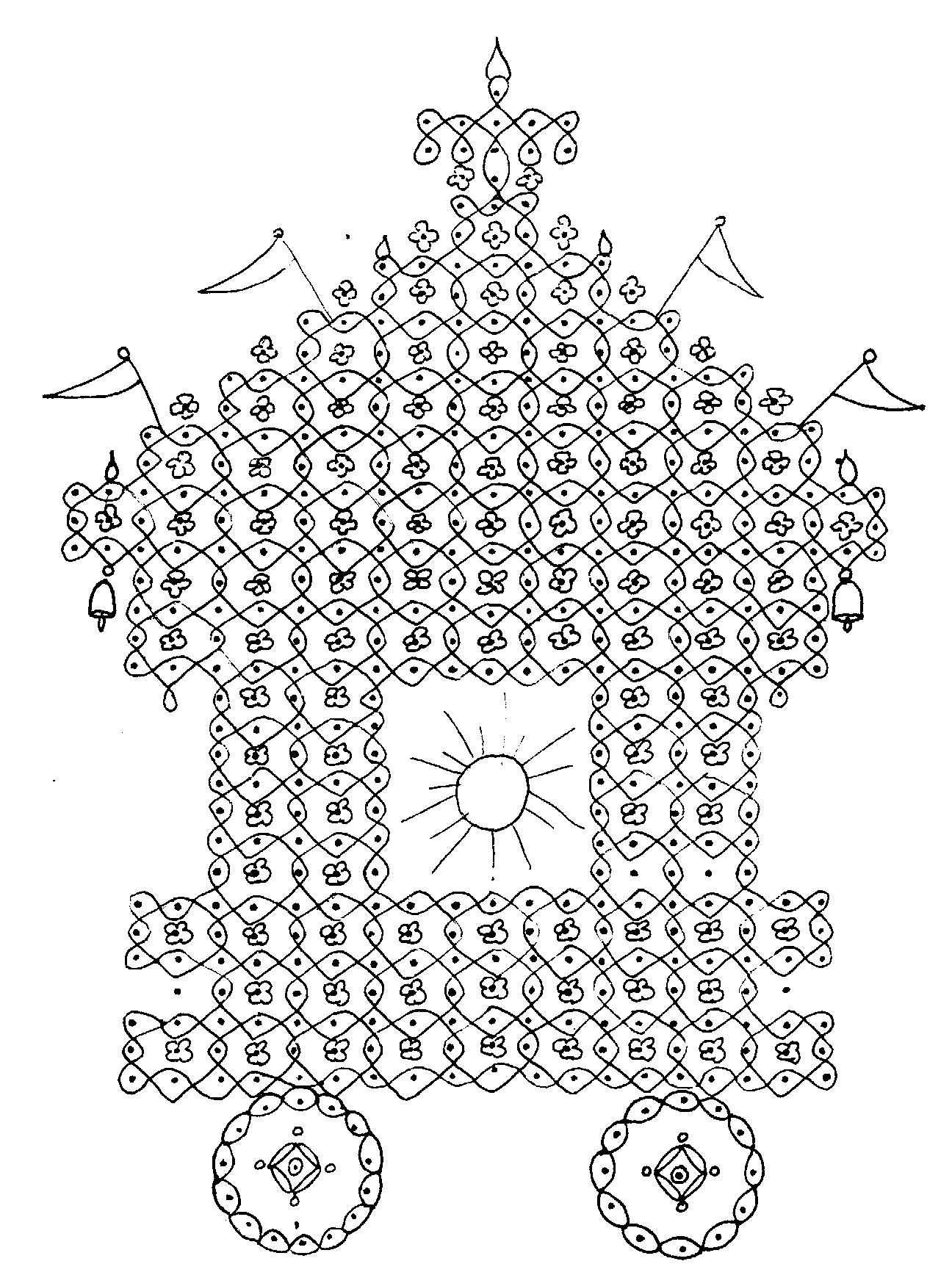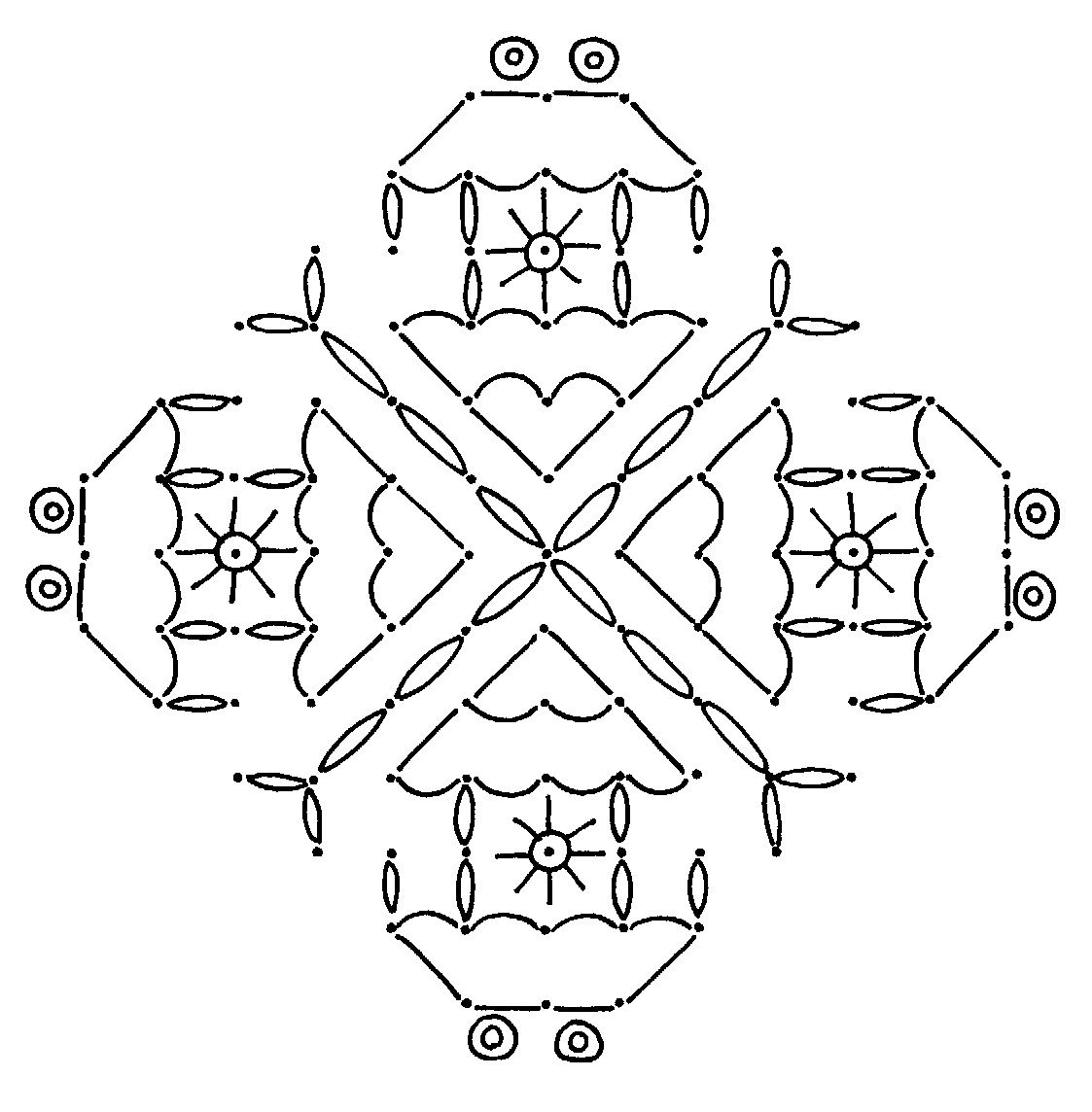Kolam to celebrate Pongal — part 1
The month of Thai starts with the most celebrated and joyful harvest festival called Pongal. The kolam extend beyond the intimacy of the homes, spreading their lines and dots into public space. It is women who weave together the objects of a bountiful period on white or coloured canvasses.

Day after day, the music and dance season dissolves quietly as the introspective month of Margazhi gives way to Thai masam (mid-January to mid-February) known as the month of weddings and other auspicious beginnings. According to a Tamil saying: "Thai piranthal vazhi pirakkum", meaning - the birth of the month of Thai will pave the way for new opportunities - the period heralds the arrival of harvested crops, paddy, sugarcane, ginger and turmeric that come in plenty if abundant rainfall has blessed the soil during the year. The month of Thai starts with the most celebrated and joyful harvest festival called Pongal. The economy of Tamil-Nadu is essentially based on agriculture and animal husbandry, therefore Pongal celebrates the farmers, their cattle that toil in the fields, the sun, the timely rains, and the earth. Pongal, also called Makara Sankranti, marks the end of winter solstice and the beginning of the sun's journey northwards (Uttarayanam).
The festival itself is named after the traditional dish "pongal", which means "to boil over or overflow". It references the preparation of rice, moong dal, jaggery and milk. The pongal sweet dish is prepared in clay pots, offered to the gods and goddesses, also to the cows, and then shared by the family.
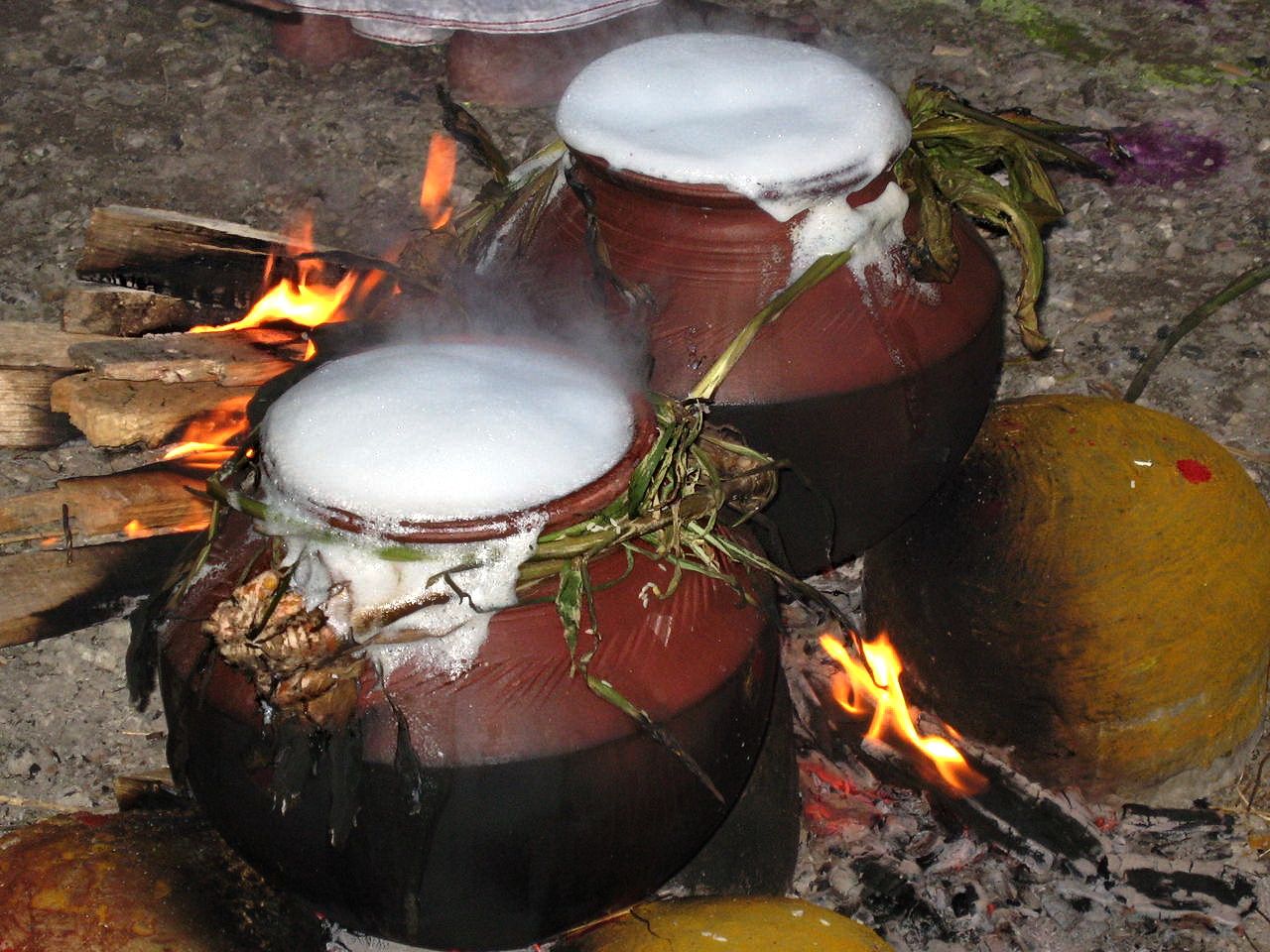
Bhogi Pongal
Pongal festival starts on the last day of Margazhi and is called Bhogi Pongal. On this day, Indra, the god of rain and thunderbolt, is worshipped by farmers for abundant harvest and cattle. Everywhere, people clean their homes, collect unwanted items and discard them on the pavement where they are set alight. Although every year, the state government launches awareness campaigns ahead of Bhogi festival to ensure smoke-free celebrations, it has yielded very few tangible results. Children sing and dance in the streets playing the molam, a local tambourine. The acrid smoke from burning tyres and plastic fills the air of cities and villages. The eyes water, the throat tingles, and with each breath the thick cloud fills your lungs. Ironically the disposal of derelict objects in the fire is supposed to purify the soul, but that is debatable!
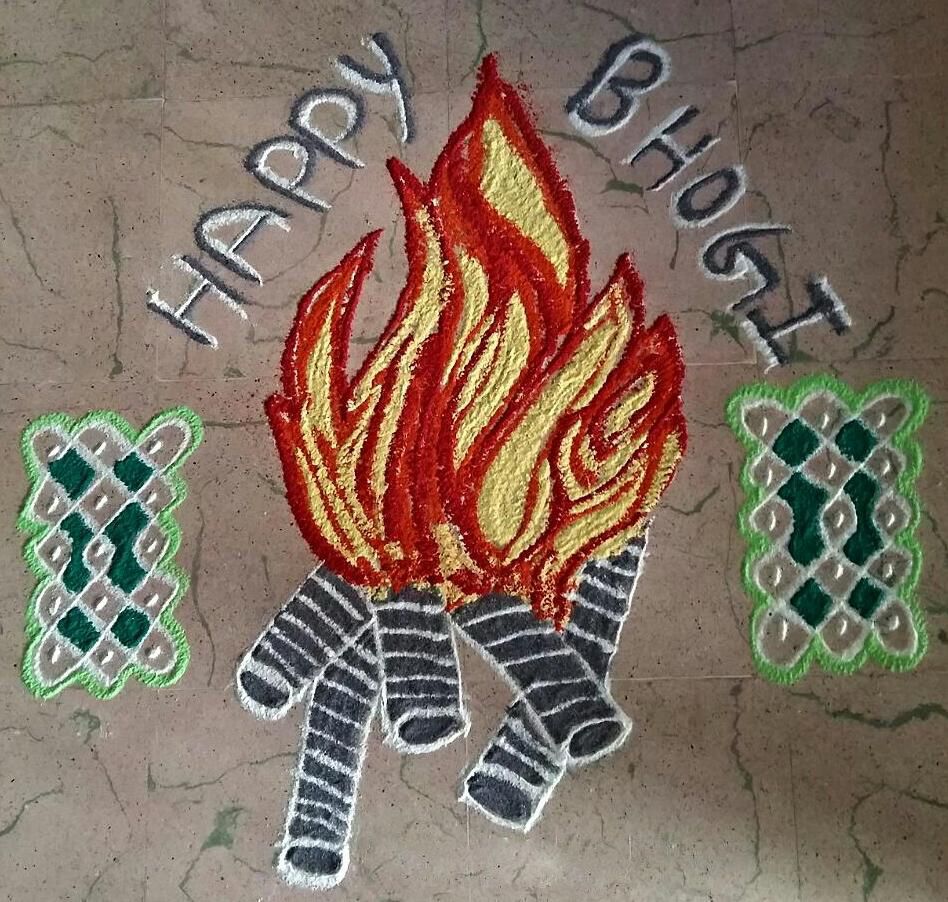

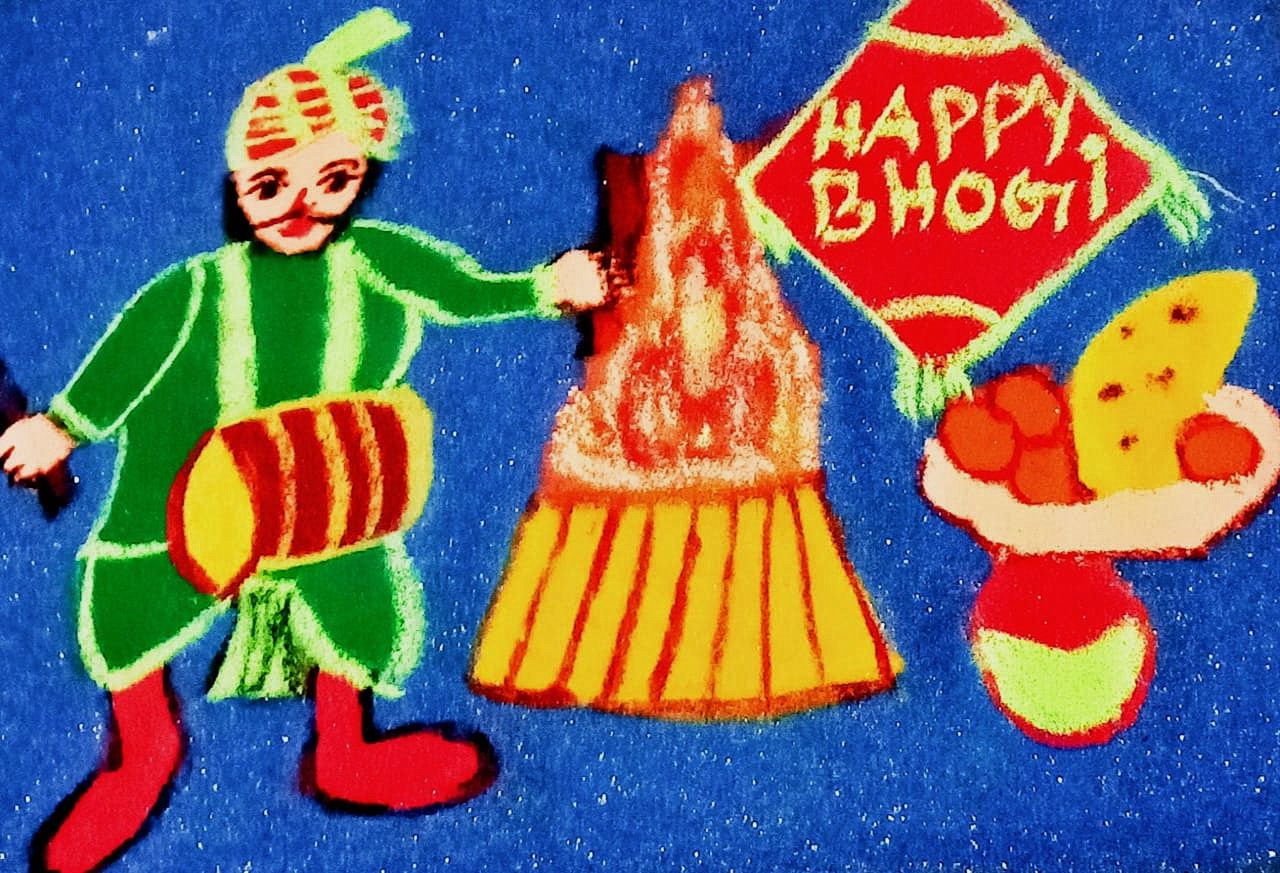
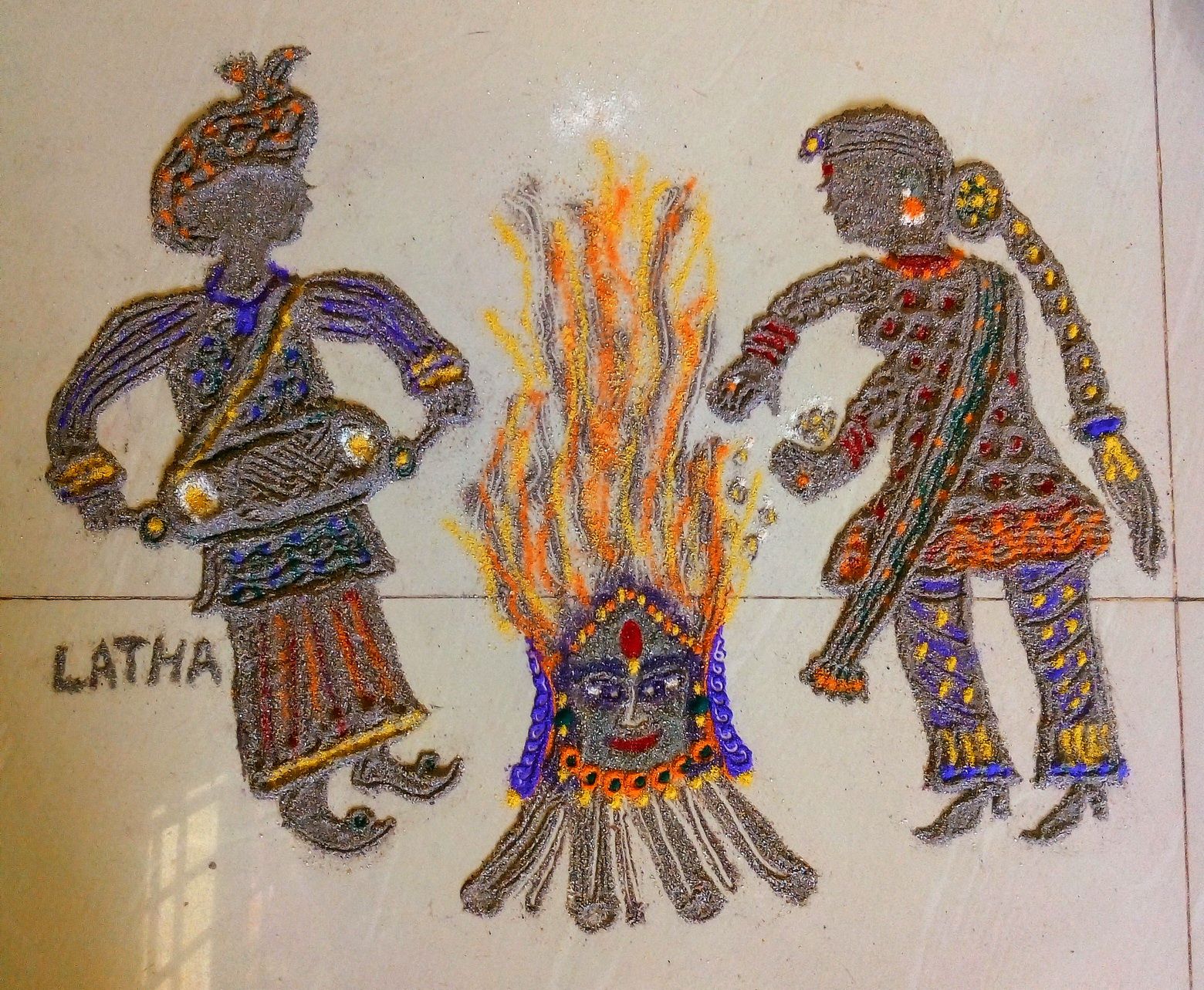
Surya Pongal or Perum Pongal
The second day is Surya Pongal, dedicated to Surya, the Sun god. Uttarayana period heralds the end of the rainy season. It is said that Surya leads his magnificent team of seven horses northwards in the sign of Makara (Capricorn) and drives out darkness from our lives. According to popular belief, those who die during this period are freed from the cycle of reincarnation. Many kolam on that day depict symbolically the sun in the form of a chariot and the central part of the design generally denotes an image of the sun along with the moon sometimes.
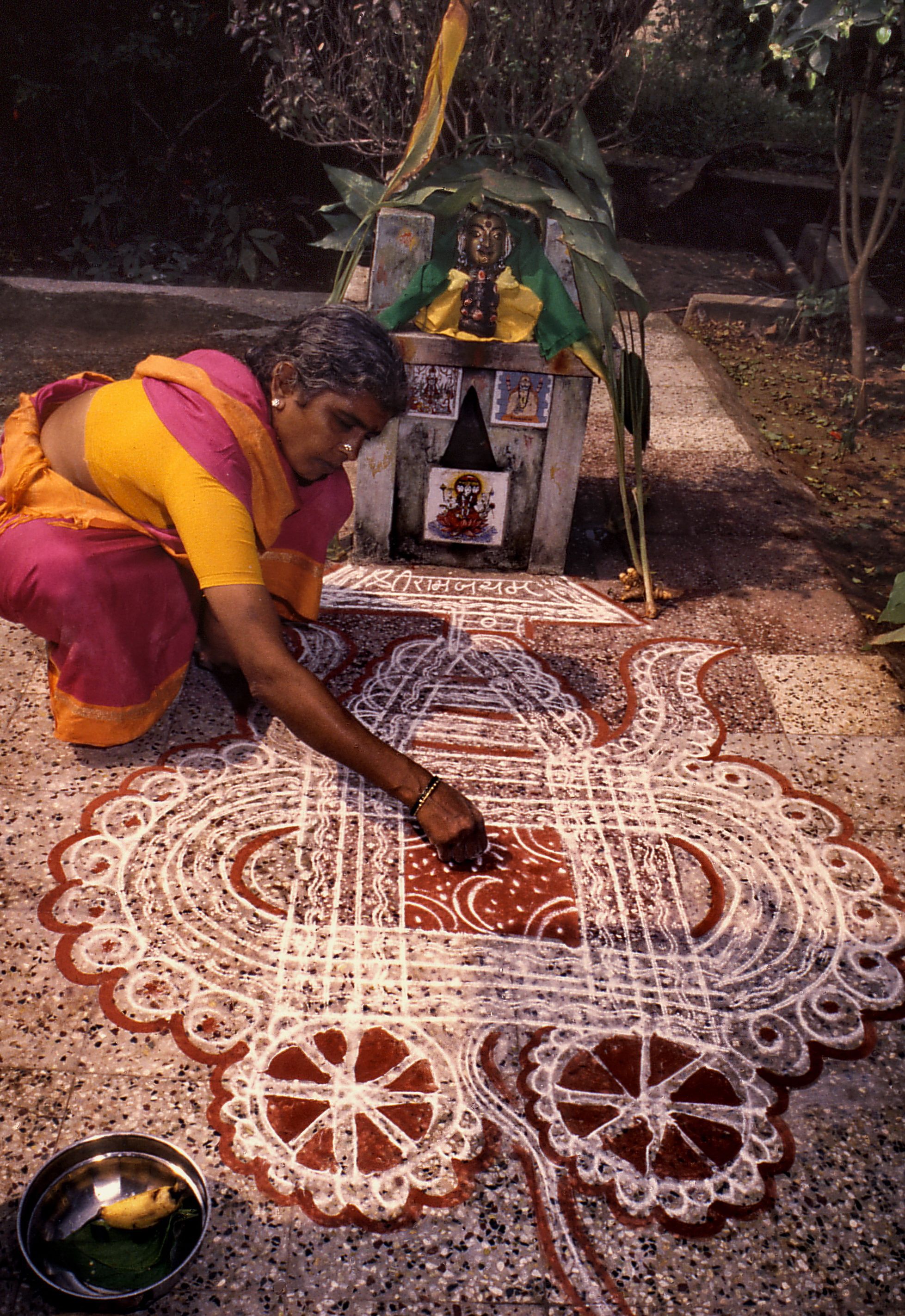
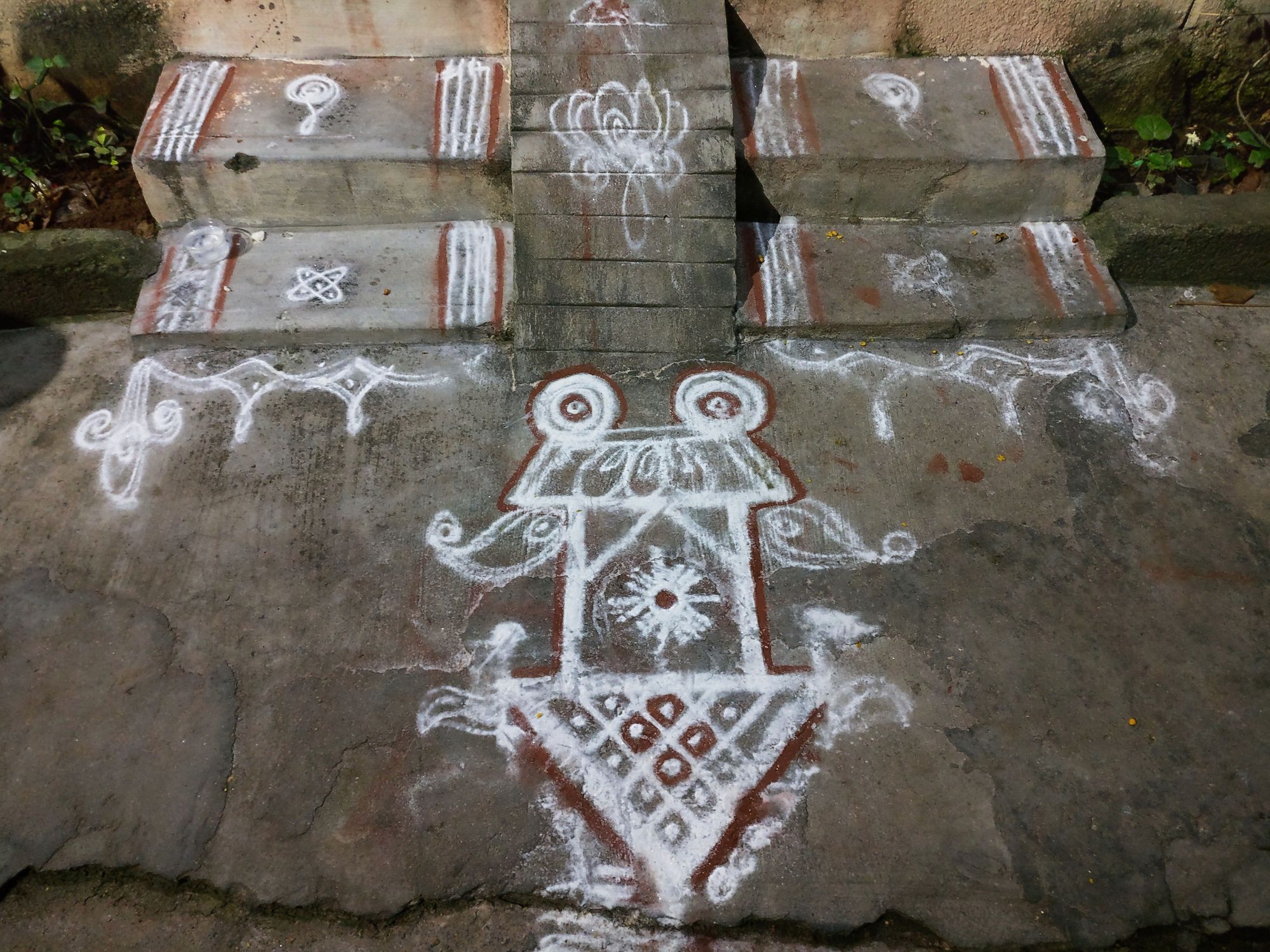
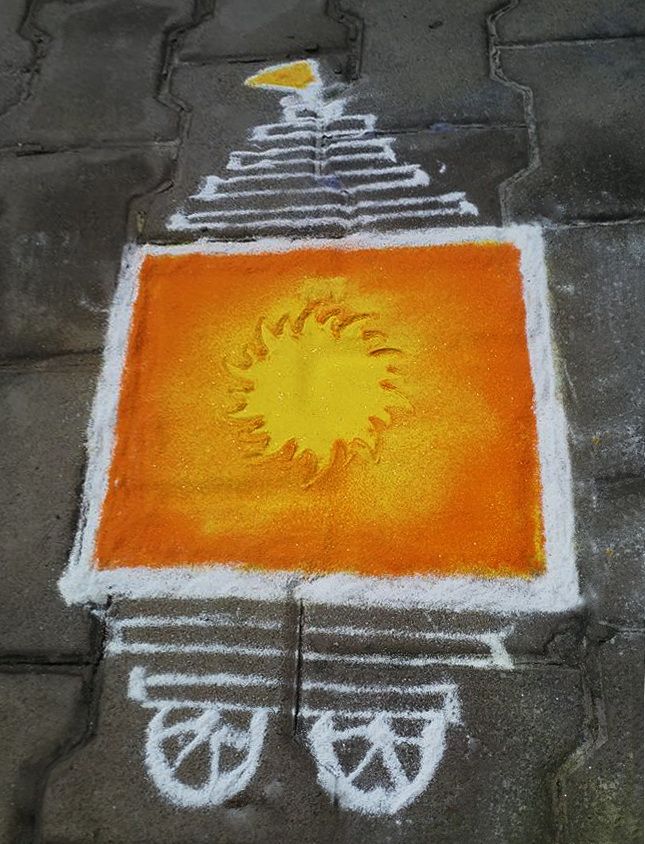
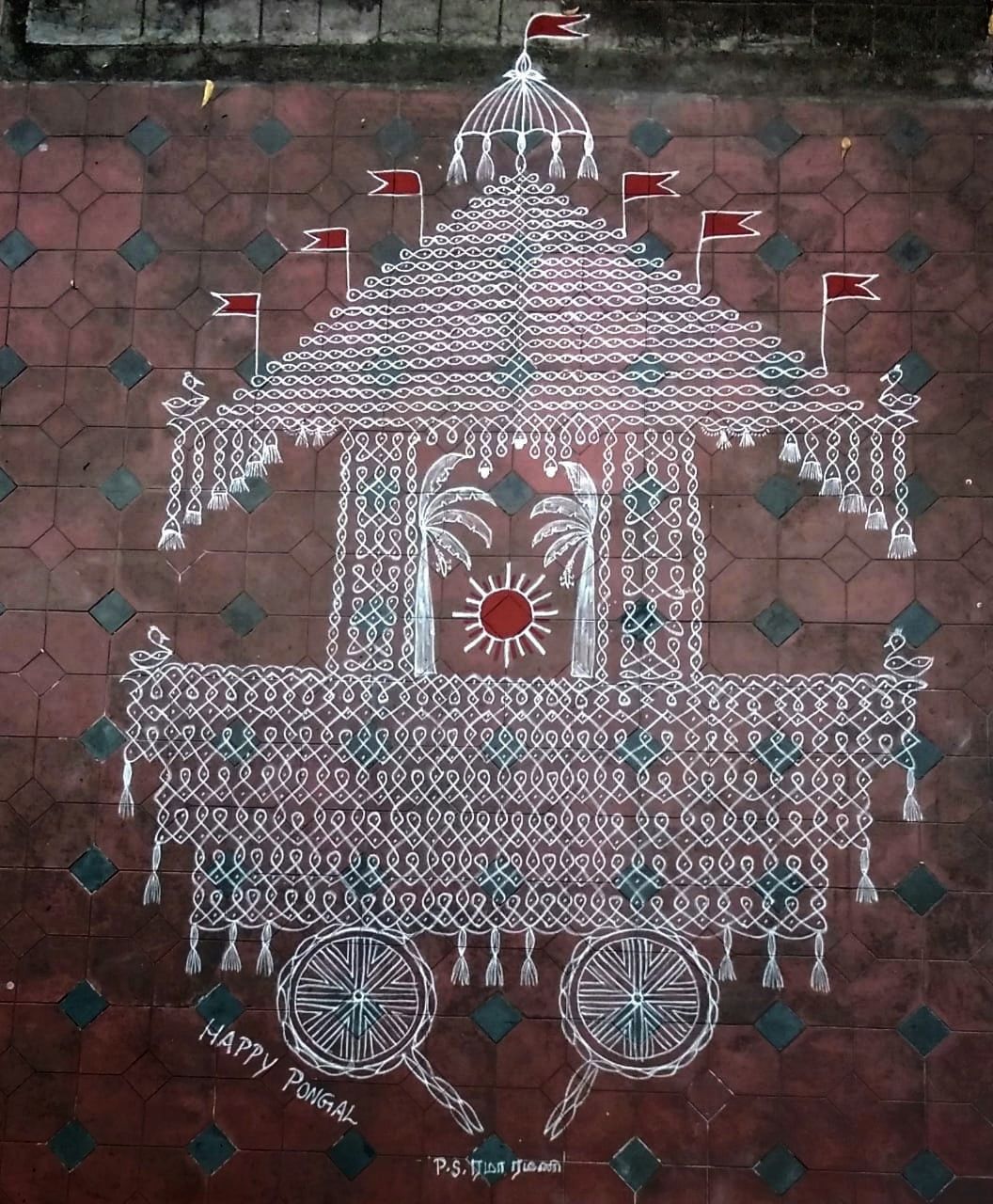
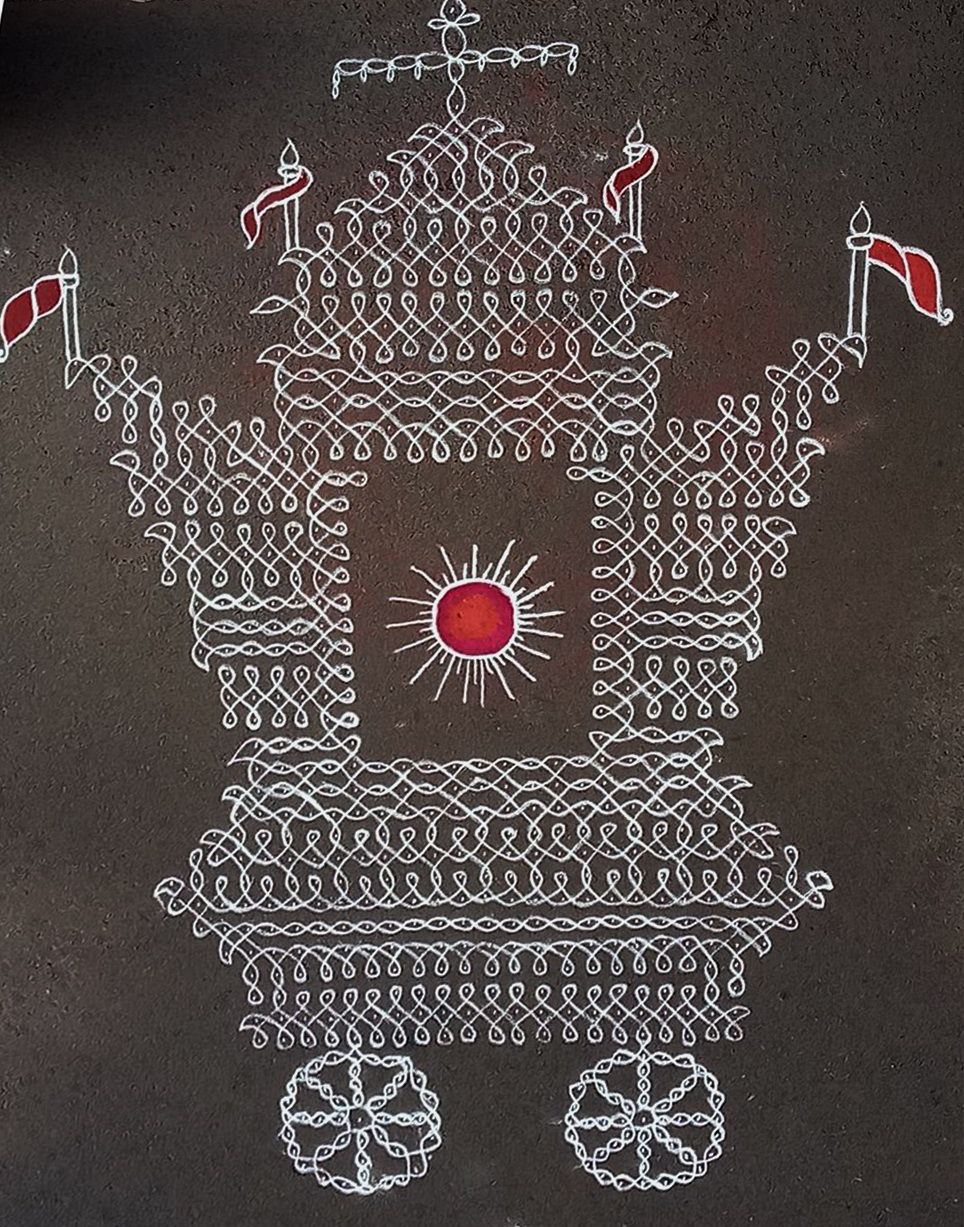
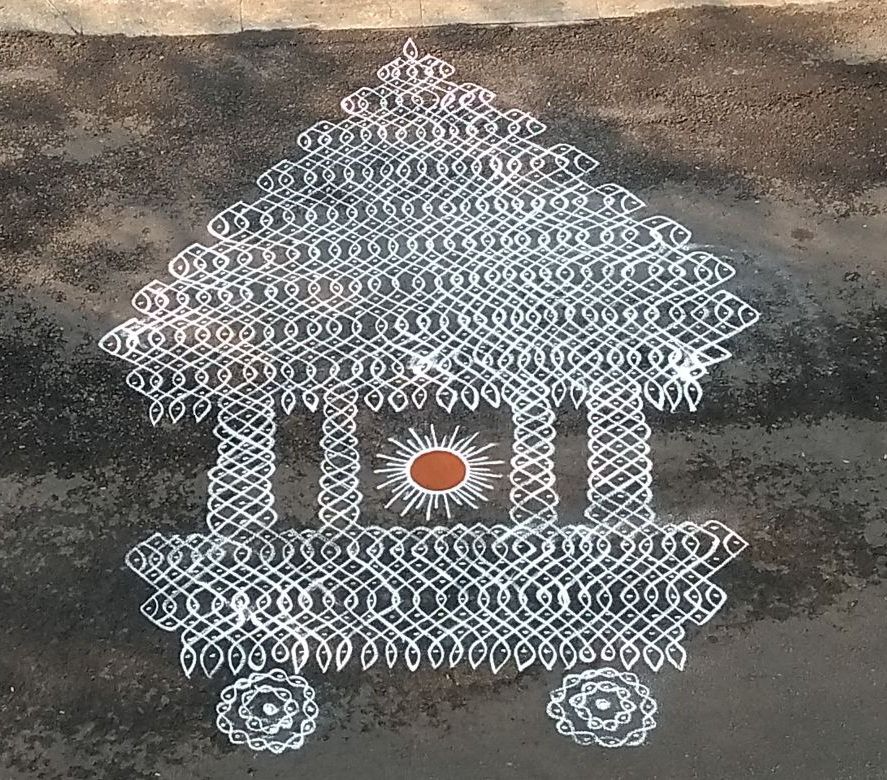
Like the temple deities wandering in procession through the streets, the kolam extend beyond the intimacy of the homes, spreading their lines and dots into public space as a means to bond families and neighbours, reaffirming their belonging to the same community. It is women who weave together on white or coloured canvasses, the symbols of a bountiful period; pots, sugarcane, turmeric, and cows are drawn at every street corner in various combinations.
To be continued...
